
|
1) Number of accidents by type of poor maintenance (2000-2004)
There are numerous accidents in which poor maintenance was not the primary cause, and therefore was not recorded as a legal offense, but nevertheless was a contributing factor. Accordingly, inadequate-maintenance accidents (1 to 12 in Table 4) taken up here far outnumber those reviewed in the preceding Section 2.
The number of poor-maintenance accidents under this category during the last 5 years peaked in 2001, and has been more or less on the decline since then. By type, accidents to which °»faulty tires°… contributed run approximately 70% each year, followed by those aggravated by °»faulty brakes°…, about 10%. There is little year-to-year variance in this tendency. (Table 4 and Figure 4)
|
|
|
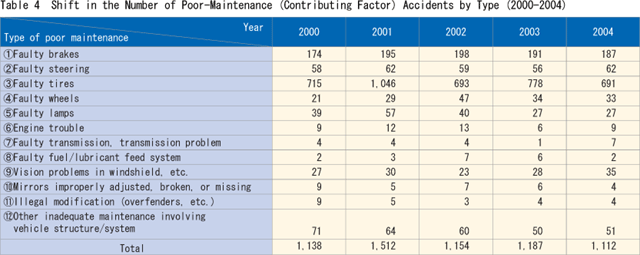
|
|
|
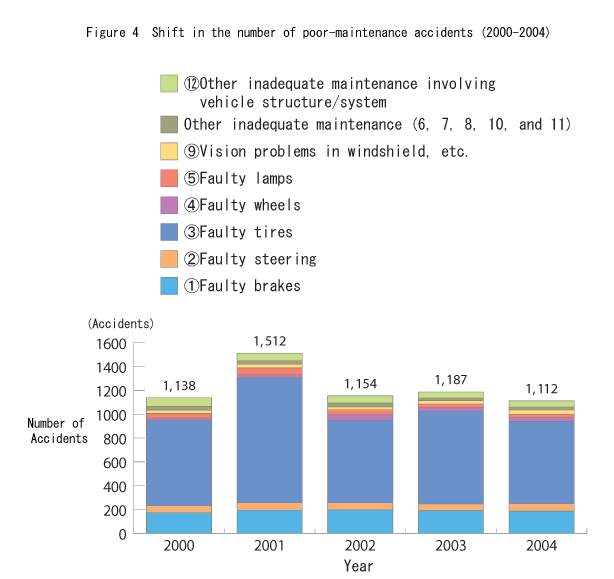
|
|
2) Poor-maintenance accidents by vehicle type (2004)
A review on poor-maintenance accidents by type of vehicle involved shows that ordinary-sized passenger cars accounted for the most, at 590 accidents (53.1% of all vehicles), followed by ordinary-sized trucks at 131 accidents (11.8%), motorcycles and mopeds at 135 accidents (12.1%), light trucks at 98 accidents (8.8%), and light passenger cars at 95 accidents (8.5%).
The ratio of poor-maintenance accidents compared to the total was large among large-size cargo carriers (including trailers). (Table 5 and Figure 5)
|
|
|
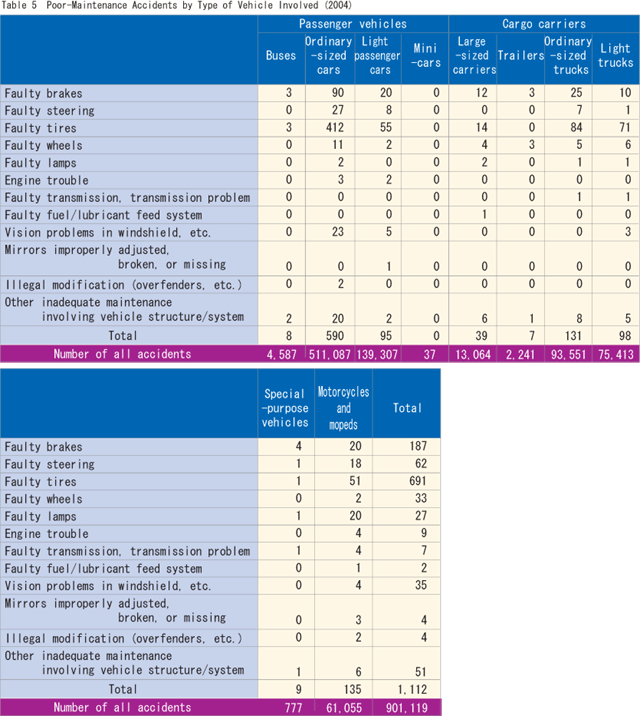
|
|
|
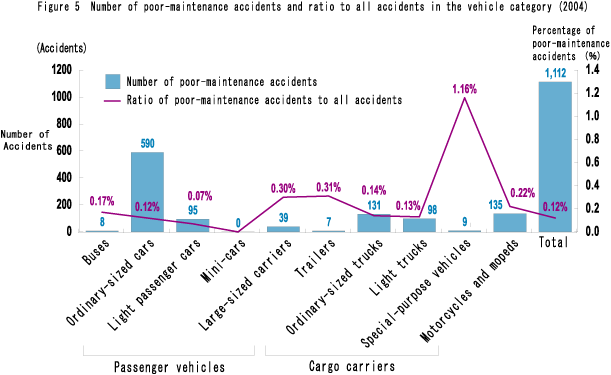
|
|
3) Pattern of accidents in which faulty tires are involved (2004)
Accidents in which °»faulty tires°… are involved, which account for a large portion of all poor-maintenance accidents, are examined by accident patterns. Although some variations exist depending on the type of vehicle, vehicle-to-vehicle rear-end crashes numbered 187 cases, taking up about 27%, while solo-vehicle accidents totaled 210 cases, or approximately 30%. (Table 6 and Figure 6)
|
|
|
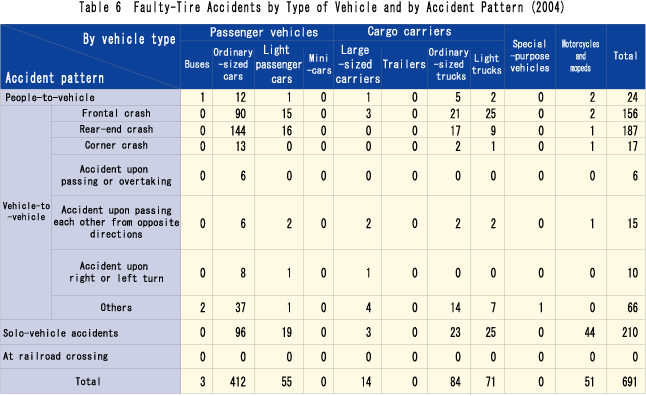
|
|
|
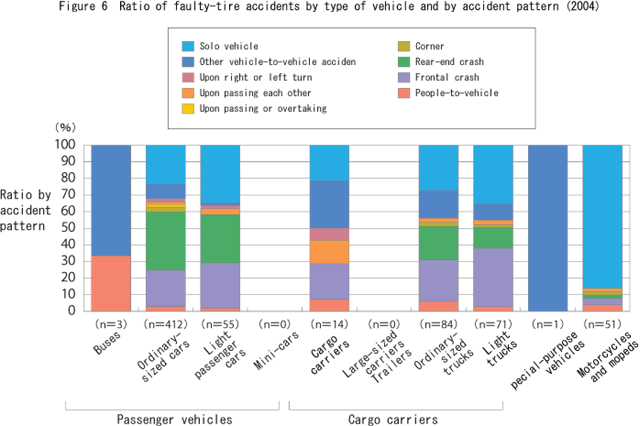
|
|
4) Faulty-tire accidents (2004)
Faulty-tire accidents may be subdivided into °»use of summer tires on snowy road°… (433 accidents), °»flat tires and tire blowouts°… (127 cases), and °»worn tires°… (69 cases). Accidents in which the use of summer tires under snowy conditions was a contributing factor fell significantly from 500 such cases in the preceding year to 433. (Table 7 and Figure 7)
|
|
|
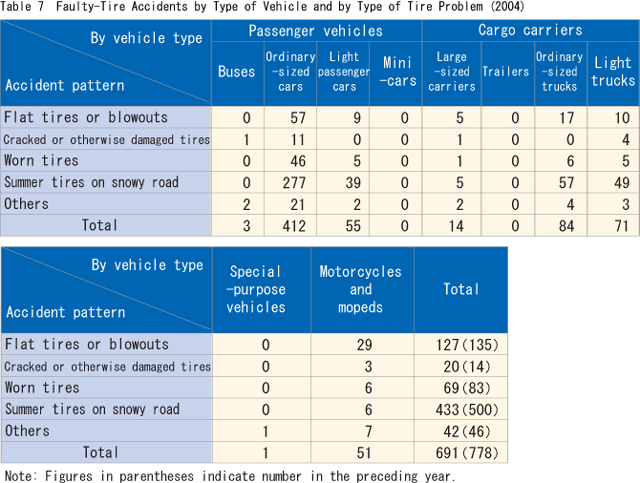
|
|
|
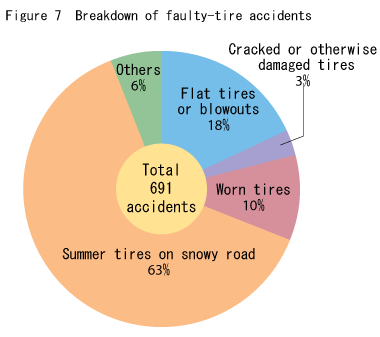
|
|
|
UP
Next
|
